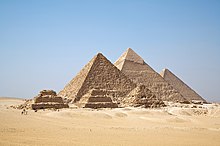Circassians_in_Egypt
Circassians in Egypt
Egyptians of partial or full ethnic Circassian origin
The Circassians in Egypt (Adyghe: Мысырым ис Адыгэхэр, romanized: Mısırım yis Adıgəxər; Arabic: الشركس في مصر) are people of Egypt with Circassian origin. For centuries, Circassians have been part of the ruling elite in Egypt, having served in high military, political and social positions.[1] The Circassian presence in Egypt traces back to 1297 when Lajin became Sultan of Mamluk Sultanate of Egypt. Under the Burji dynasty, Egypt was ruled by twenty one Circassian sultans from 1382 to 1517.[2][3][4] Even after the abolishment of the Mamluk Sultanate, Circassians continued to form much of the administrative class in Egypt Eyalet of Ottoman Empire, Khedivate of Egypt, Sultanate of Egypt and Kingdom of Egypt.[1] Following the Revolution of 1952, their political impact has been relatively decreased.
With the lack of censuses based on ethnicity, population estimates vary significantly.[5]
Mainly of mixed Circassian Abazin origin, the House of Abaza is the largest aristocratic family and the largest extended family in the country and did retain cultural and political clout to current times.[6][7][8][9]
